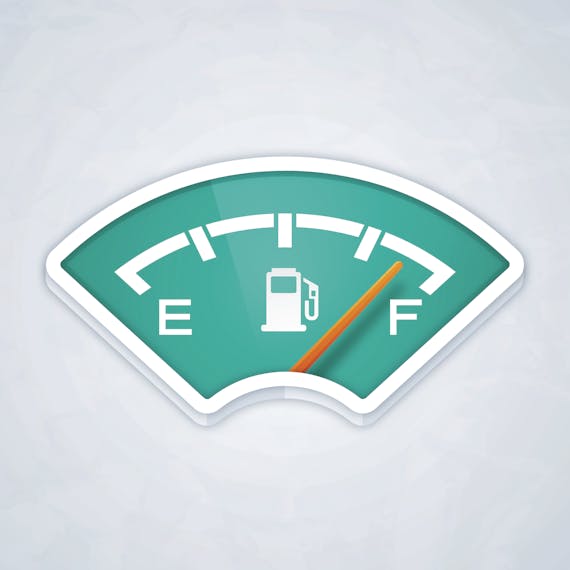Top tips: fuel-efficient driving

Getting the most out of your fuel helps not just your bank balance, but the environment too. Fuel efficient driving really is a no-brainer. Here are some tips that will make your fuel go further.
Car servicing and car maintenance
There are two key elements to fuel-efficient driving: the car and the driver. Both need to be working at peak efficiency if you’re to have any chance of getting the most from your fuel tank.
Starting with the car, if it isn’t properly maintained and serviced, fuel consumption can increase by as much as 10%. Even something as simple as a blocked air filter from an overdue service can have an effect, so try to stick to the scheduled service.
But you can also play your part by making regular vehicle checks as part of the efforts to improve fuel consumption.
Tyre pressure is a prime example. Tyres that are underinflated can easily increase fuel consumption by 2%. That could be equivalent to a cup of coffee every time you fill up.
Reducing your car weight
Reducing the weight of your car also helps improve its efficiency: did you know that for every 45kg of excess weight in a car, fuel consumption increases by a further 2%? You don’t need to do anything radical here, just keep your boot free of unnecessary stuff. Don’t keep a set of golf clubs, for example, when they’re not needed.
The other thing that can severely damage your fuel efficiency is anything on the roof, such as a storage box or bike carrier. A roof box, for example can increase fuel consumption by 11-13%: if it’s full, there’s the extra weight to consider as well as the compromised aerodynamics.
Air conditioner or open windows?
When the weather is a bit warmer, the driver’s dilemma is whether to open the windows or switch on the air conditioning system. The bad news is that neither is good for fuel efficiency.
A study by the Society of Automotive Engineers (SAE) found that driving with the windows up and the air conditioning on is typically a more fuel-efficient way to drive. At speeds around 55mph, having the windows down saw efficiency decrease by 20% on average, while air con reduced it by about 10%.
Around town, however, lower speeds mean that the drag caused by lowering the windows is less, so it's better for fuel economy to do that than use air con. (However, the poor air quality in some towns and cities might mean windows rolled up is better for your health.)
Increase your reaction time while driving
Moving on to the driver side of the fuel efficiency equation, one important thing to always remember is to create as much time and space as possible, to give yourself more reaction time. This is not only good from a safety point of view, but also for fuel economy.
The less space you have around your car, the more you have to react to what other drivers are doing. That means that you’ll braking late and stopping more (which affects your fuel efficiency), simply because you don’t have enough time to react. By maintaining a safe gap between you and the vehicle ahead, you have more time to lift off the accelerator, rather than stepping on the brake, while space to the sides will give you a possible escape route, if you need it.
Watch your driving speed
Speed is closely linked to fuel efficiency. Studies show that the most efficient speed you can travel at in a car, in terms of optimising fuel economy, is between 55 and 65mph. When you start going faster than that, your fuel consumption increases rapidly: driving at 85mph, for example uses 40% more fuel than at 70mph – as well as being illegal in the UK.
Gear selection is important, too. If you have a rev counter in your car, keep half an eye on it: when it reaches 2,000rpm, change up a gear – or even two (known as block changing). Changing gears like this can help you achieve a 15% fuel saving, according to the Energy Saving Trust.
Planning your journey
Perhaps the most important thing to remember when trying to improve fuel efficiency is planning. Whenever you get in a car, especially for a longer journey, have a plan.
That means allowing plenty of time to get to your destination (so you don’t rush when you're late, leading you to drive too fast). Avoid busy periods on the road, if at all possible (so you don’t get stuck in jams). Plan your route to avoid any congested roads – and also have an alternative route.
Good planning will save you a load of stress too, as well as saving you money.
Make searching and staying updated even easier.